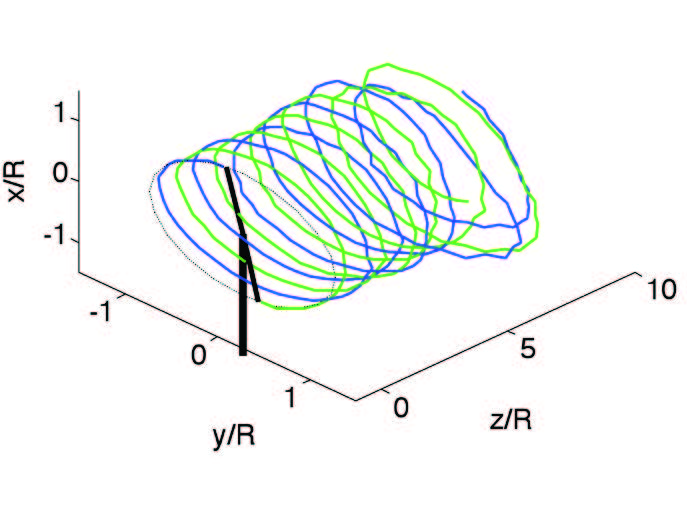Wake Geometry in a Turbulent Flow.
Renewable energy is increasingly important with rising energy demands, finite fossil fuel supplies and growing environmental concerns. Over the last 25 years, wind turbine technology has increased in power output, but to meet a federal goal of generating 20 percent of the nation’s energy from wind by 2030, production must increase dramatically and several significant technological advancements are needed, including improved structural and aerodynamic modeling tools.
“The inability of current state-of-the-art wind turbine design codes to accurately and reliably predict performance and loads demonstrates the need for enhanced models,” said Jack McNamara, Ph.D., assistant professor of mechanical and aerospace engineering at The Ohio State University. “One issue noted in previous work is inadequate modeling of the rotor wake. For more accurate modeling of the problem, a wake model is required, where the vortex trailing the blades is tracked and its effects are included in the aerodynamic calculations.”
McNamara’s Computational AeroElasticity Laboratory is accessing Ohio Supercomputer Center resources to study the effect of the wake on the aeroelastic response and performance of a representative wind turbine. Krista Kecskemety, a graduate student in McNamara’s lab, is currently incorporating the OSU Free Wake model into the open-source NREL wind turbine aerodynamics code, AeroDyn. This will then be used in conjunction with the NREL FAST and MSC ADAMs comprehensive wind turbine codes to study of the interaction of the wake with the turbine and its impact on predicted power performance and aeroelastic blade loads.
--
Project lead: Jack J. McNamara, The Ohio State University
Research title: Impact of wake effects on the performance and aeroelastic
behavior of wind turbines
Funding sources: Ohio Space Grant Consortium
